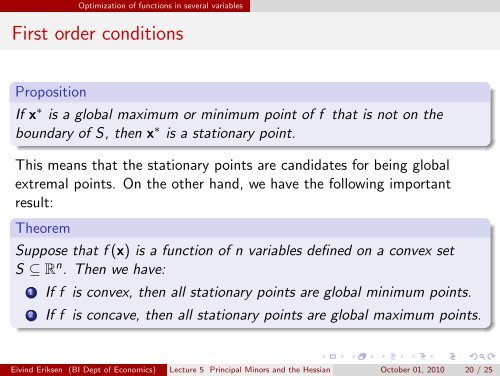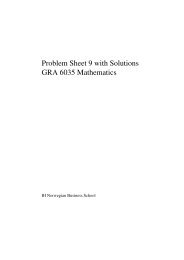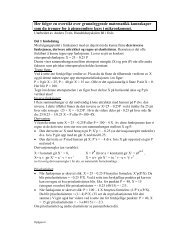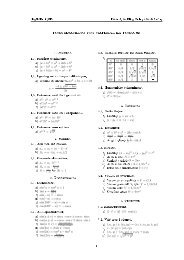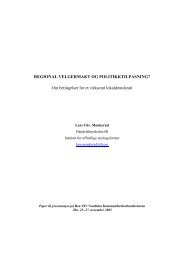Lecture 5 Principal Minors and the Hessian
Lecture 5 Principal Minors and the Hessian
Lecture 5 Principal Minors and the Hessian
Create successful ePaper yourself
Turn your PDF publications into a flip-book with our unique Google optimized e-Paper software.
Optimization of functions in several variables<br />
First order conditions<br />
Proposition<br />
If x ∗ is a global maximum or minimum point of f that is not on <strong>the</strong><br />
boundary of S, <strong>the</strong>n x ∗ is a stationary point.<br />
This means that <strong>the</strong> stationary points are c<strong>and</strong>idates for being global<br />
extremal points. On <strong>the</strong> o<strong>the</strong>r h<strong>and</strong>, we have <strong>the</strong> following important<br />
result:<br />
Theorem<br />
Suppose that f (x) is a function of n variables defined on a convex set<br />
S ⊆ R n . Then we have:<br />
1 If f is convex, <strong>the</strong>n all stationary points are global minimum points.<br />
2 If f is concave, <strong>the</strong>n all stationary points are global maximum points.<br />
Eivind Eriksen (BI Dept of Economics) <strong>Lecture</strong> 5 <strong>Principal</strong> <strong>Minors</strong> <strong>and</strong> <strong>the</strong> <strong>Hessian</strong> October 01, 2010 20 / 25


